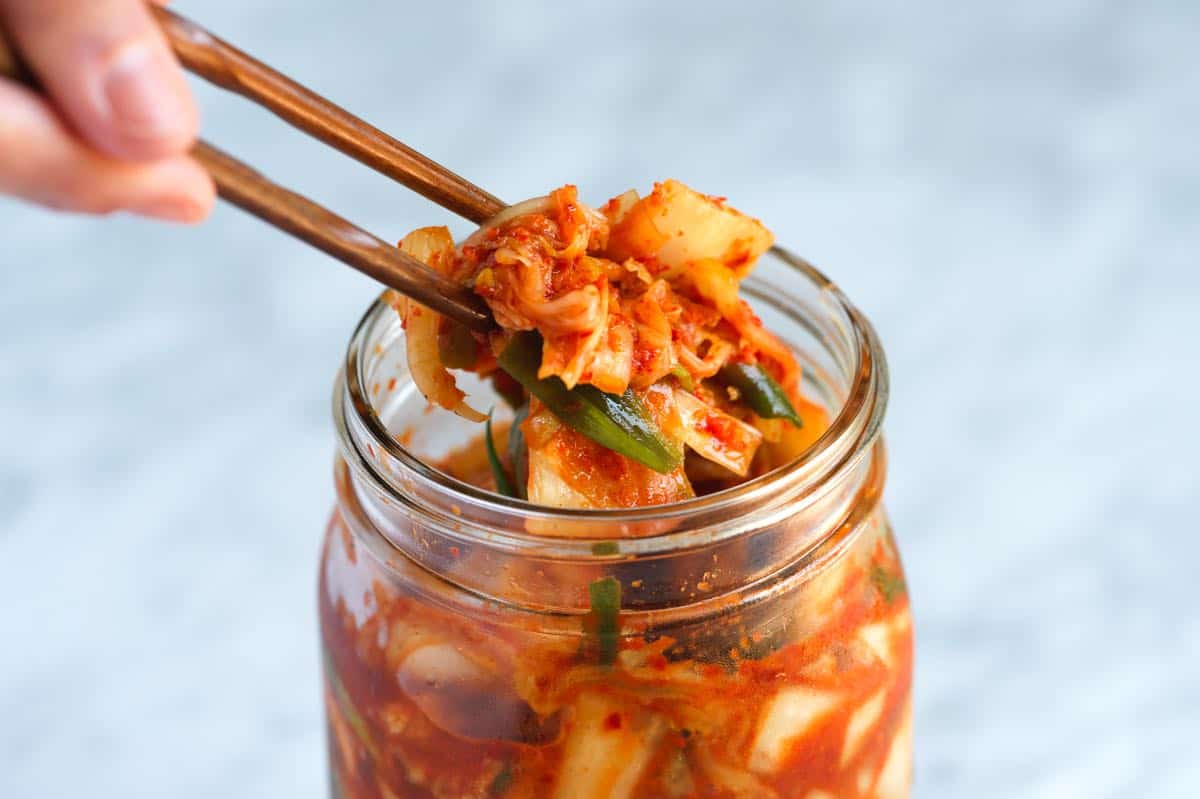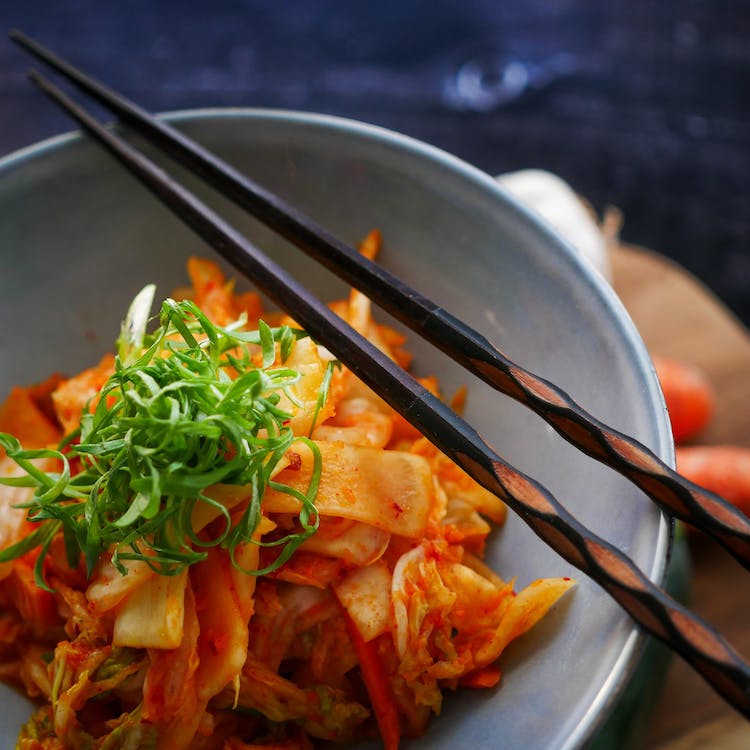What Does Kimchi Taste Like? Healthy Insights into a Fermented Delicacy
What Does Kimchi Taste Like? Kimchi s a harmonious blend of sweet, salty, spicy, and tangy notes. The initial crunch of the vegetables gives way to a burst of umami, followed by the warmth of the gochugaru and the earthiness of garlic and ginger.

In the vast universe of culinary delights, few foods possess the complex and vibrant flavors of kimchi. Originating from Korea, this traditional fermented dish has captivated taste buds worldwide with its unique combination of tastes and textures. But what exactly is kimchi, and how does it tantalize the senses? Join us on a journey as we explore the world of kimchi, its production process, and the nutritional benefits that make it a beloved addition to diets across the globe.
Unlocking the Essence of Kimchi
At its core, kimchi is a Korean side dish made from fermented vegetables. The star ingredient is typically Napa cabbage, though other vegetables like radishes and cucumbers are also used. The magic of kimchi lies in its preparation, where a blend of seasonings, spices, and time transforms simple vegetables into a symphony of flavors.
The Flavors
The process of making kimchi is an art form in itself. The first step involves salting the vegetables to draw out moisture and initiate the fermentation process. After rinsing off the salt, the vegetables are mixed with a spice paste known as "gochugaru" – a Korean red pepper powder that imparts a distinct heat and vibrant color.
Other flavor-enhancing ingredients like garlic, ginger, fish sauce, and scallions are added to the mix. The combination is then packed into a container, tightly sealed, and left to ferment. As time progresses, the flavors intensify, and the natural probiotics created during fermentation contribute to both the taste and the health benefits of kimchi.
What Does Kimchi Taste Like?
What Does Kimchi Taste Like? Kimchi s a harmonious blend of sweet, salty, spicy, and tangy notes. The initial crunch of the vegetables gives way to a burst of umami, followed by the warmth of the gochugaru and the earthiness of garlic and ginger. The flavors evolve with each bite, offering a sensory experience that's both dynamic and memorable.
Balance and Harmony
What sets kimchi apart is its impeccable balance. The heat from the red pepper powder is balanced by the sweetness of the vegetables, while the saltiness is tempered by the natural fermentation process. This harmony of flavors is what makes kimchi an incredibly versatile accompaniment to a variety of dishes.
Nutritional Bounty of Kimchi
Kimchi's fermentation process results in the creation of probiotics – beneficial bacteria that contribute to gut health. These probiotics support digestion, boost the immune system, and have even been linked to improved mental well-being.
Nutrients
Beyond its taste, kimchi is rich in essential nutrients. It's a good source of vitamins A and C, as well as minerals like calcium and iron. Additionally, the fermentation process enhances the bioavailability of certain nutrients, making them more easily absorbed by the body.
Potential for Weight Management
Kimchi's low-calorie content and high fiber content can contribute to feelings of fullness, potentially aiding in weight management efforts.
Antioxidant and Anti-Inflammatory Properties
The various spices and seasonings used in kimchi, such as garlic and ginger, are known for their antioxidant and anti-inflammatory properties. These compounds may play a role in promoting overall health and reducing the risk of chronic diseases.

Creative Meal Ideas with Kimchi
Beyond being a delightful side dish, kimchi's versatility shines when incorporated into a variety of meals. Here are a few inventive meal ideas that embrace the bold flavors and nutritional benefits of this fermented delicacy:
1. Kimchi Fried Rice Bowl
Transform leftover rice into a flavorful and satisfying meal by adding kimchi. Sauté kimchi with cooked rice, vegetables like bell peppers and peas, and your choice of protein (tofu, shrimp, or chicken). Drizzle with a touch of sesame oil and soy sauce for an umami-rich and vibrant meal.
2. Kimchi Tacos
Give taco night a unique twist by adding kimchi to your taco fillings. Layer grilled or sautéed protein (such as beef, pork, or tempeh), kimchi, fresh lettuce, and a dollop of Greek yogurt or sour cream on warm tortillas. The combination of textures and flavors will tantalize your taste buds.
3. Kimchi Noodle Stir-Fry
Elevate your noodle stir-fry with the zingy flavors of kimchi. Stir-fry your favorite noodles with colorful vegetables, kimchi, and a sauce made from soy sauce, sesame oil, and a dash of honey. Garnish with chopped scallions and toasted sesame seeds for a delicious and vibrant dish.
4. Kimchi Grilled Cheese
Add a tangy kick to a classic grilled cheese sandwich. Layer slices of your favorite cheese and a generous amount of kimchi between two slices of whole grain bread. Grill until the cheese is melted and gooey, and the kimchi imparts its robust flavors.
5. Kimchi Buddha Bowl
Craft a nourishing Buddha bowl by combining cooked quinoa or brown rice with an array of colorful vegetables, your choice of protein (chickpeas, grilled tofu, or sliced chicken), and a generous serving of kimchi. Drizzle with a tahini-based dressing for a well-rounded and flavorful meal.
Embracing the World of Kimchi
Incorporating kimchi into your diet opens the door to a world of flavor and nutrition. From its intricate taste profile to its potential health benefits, kimchi showcases the beauty of fermented foods. Whether enjoyed on its own, as a side dish, or as a component of various recipes, kimchi's bold and complex flavors are sure to leave an indelible mark on your culinary journey. So go ahead, take a bite, and savor the captivating world of kimchi.